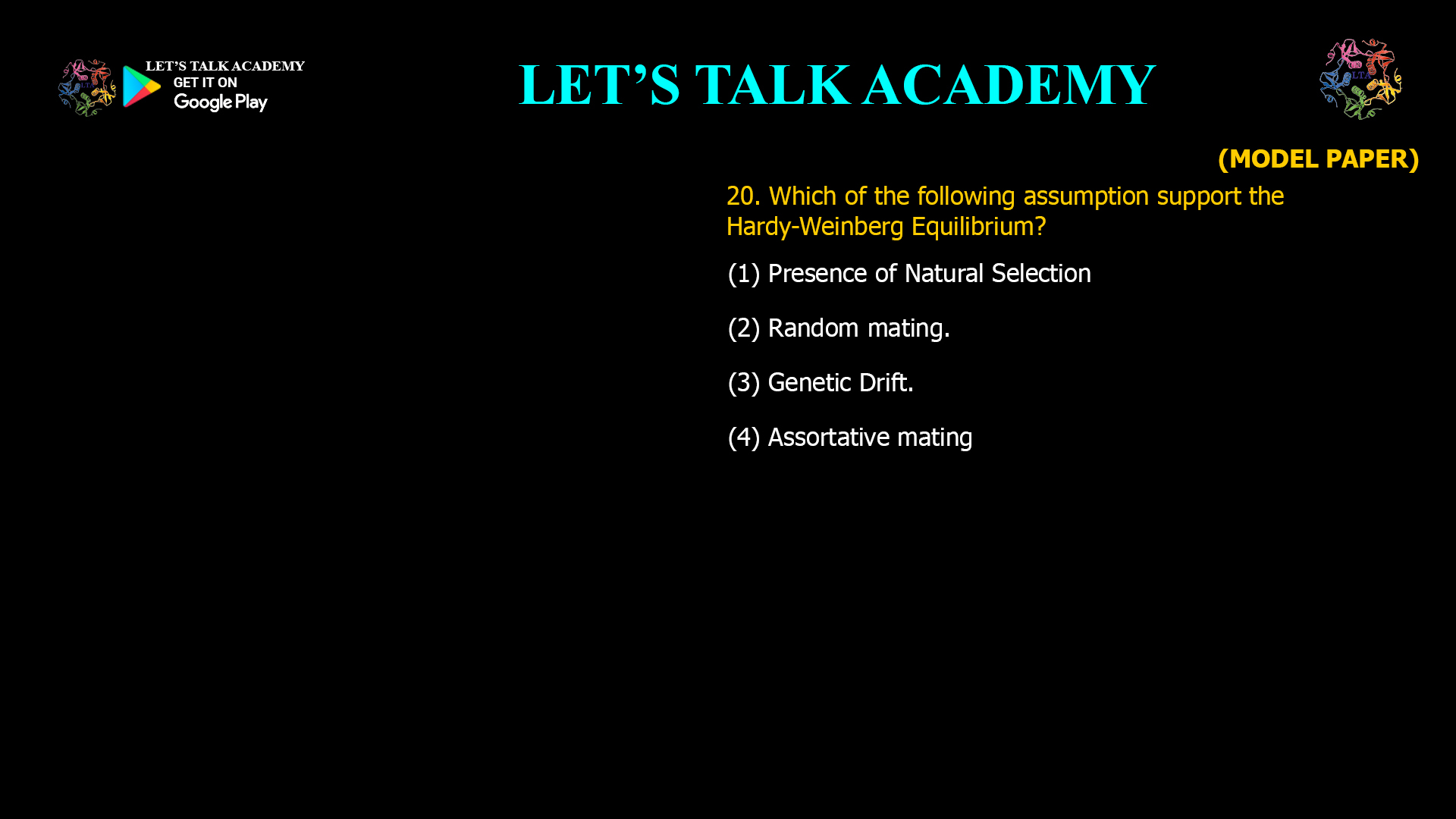- Which of the following assumption support the Hardy-Weinberg Equilibrium?
(1) Presence of Natural Selection
(2) Random mating.
(3) Genetic Drift.
(4) Assortative matingWhich Assumption Supports Hardy-Weinberg Equilibrium? Understanding the Role of Random Mating
The Hardy-Weinberg equilibrium is a fundamental concept in population genetics, providing a theoretical framework for predicting how gene and genotype frequencies remain constant from generation to generation in an ideal population. This equilibrium is maintained only if certain assumptions are met, each preventing evolutionary change in the gene pool.
The Five Key Assumptions of Hardy-Weinberg Equilibrium
For a population to remain in Hardy-Weinberg equilibrium, it must satisfy these five essential conditions:
-
Random mating: Individuals pair by chance, not according to their genotypes or phenotypes.
-
No mutation: The alleles in the population do not undergo any change.
-
No natural selection: All genotypes have equal chances of survival and reproduction.
-
No gene flow or migration: No new alleles are added or lost through migration.
-
Very large (effectively infinite) population size: This prevents random fluctuations in allele frequencies, known as genetic drift.
Evaluating the Options
Let’s analyze each option in light of the Hardy-Weinberg assumptions:
-
(1) Presence of Natural Selection:
The presence of natural selection violates Hardy-Weinberg equilibrium, as it changes allele frequencies by favoring certain genotypes over others. -
(2) Random mating:
This is a direct assumption of Hardy-Weinberg equilibrium. Random mating ensures that genotypes pair according to their frequencies in the population, maintaining stable allele and genotype frequencies across generations. -
(3) Genetic Drift:
Genetic drift, which is more pronounced in small populations, causes random changes in allele frequencies and disrupts equilibrium. -
(4) Assortative mating:
Assortative (non-random) mating, where individuals preferentially mate with similar or dissimilar genotypes, alters genotype frequencies and violates the assumption of random mating.
Conclusion
Random mating is the assumption that supports Hardy-Weinberg equilibrium. It is essential for maintaining genetic stability in a population, while the other options represent violations of the equilibrium conditions.
Correct answer: (2) Random mating.
-



